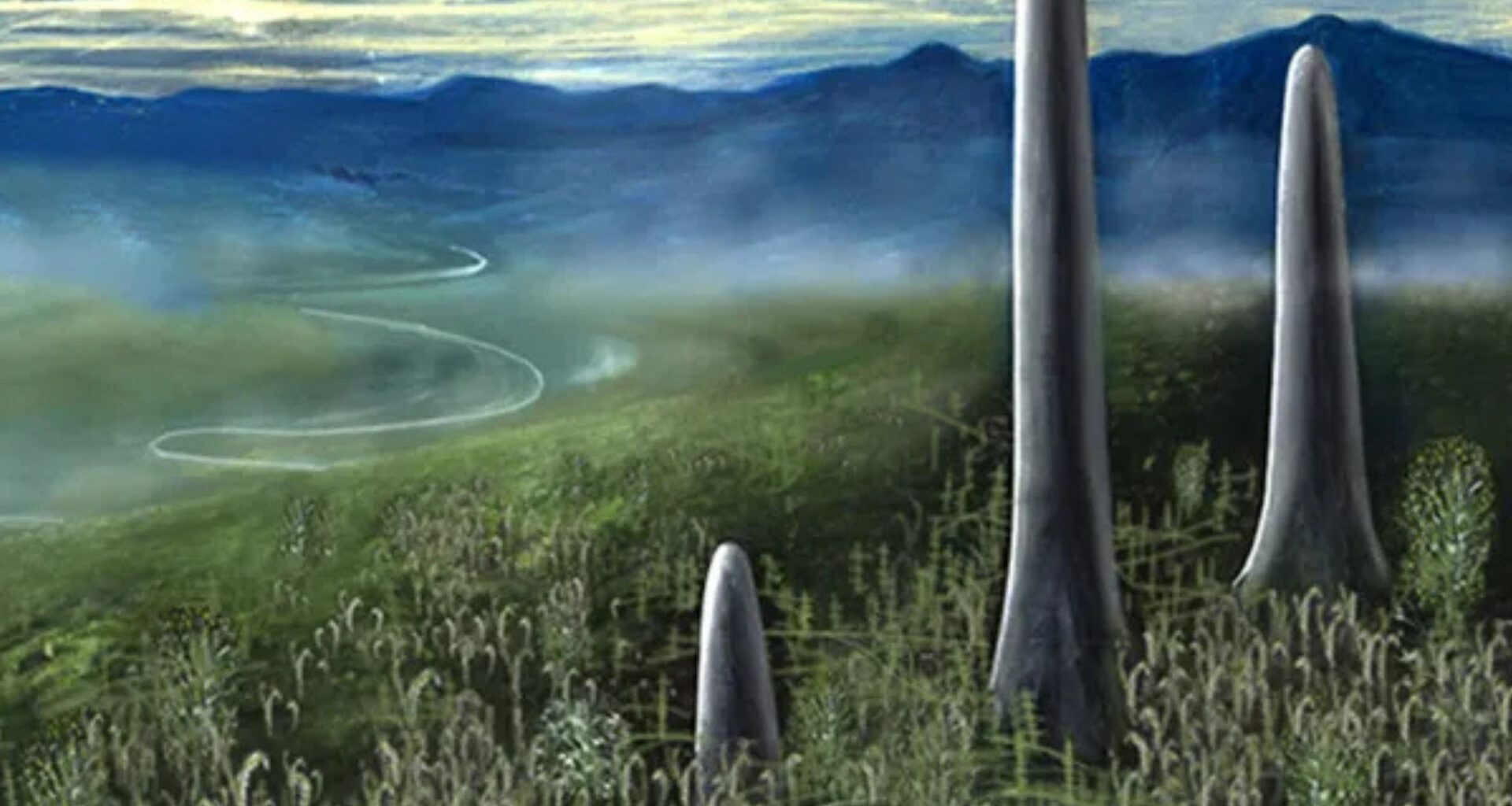Prototaxites, the mysterious ancient organisms, are changing our understanding of early Earth.
Sporting a unique, tube-like structure, these organisms attained heights of 26 feet roughly 430 million years ago. Interestingly, some experts suggested that prototaxites were the first large dry land-dwellers.
The first Prototaxites fossil, found in 1843, was initially misidentified as a conifer. This was problematic because conifers didn’t exist several million years ago.
Scientists then leaned towards it being a giant fungus, but the classification remained uncertain. A 2007 study even presented strong evidence supporting this idea.
But new research is turning that theory on its head.
Scientists from the UK recently conducted a detailed re-examination of a fossilized Prototaxites species found in Aberdeenshire, Scotland.
Recent research suggests they may represent an entirely extinct and previously unknown lineage of Eukaryotes.
“We conducted an extensive re-examination of P. taiti, leading us to reject the most widely held hypothesis that Prototaxites was a Fungus,” the researchers wrote in the study.
The team included researchers from the University of Edinburgh.
Not a fungus afterall
Prototaxites were enigmatic, ancient organisms that lived during the Late Silurian and Devonian periods.
The researchers determined that Prototaxites was not a fungus by conducting a detailed comparative analysis.
They compared its anatomy and molecular makeup to well-preserved Prototaxites fossils from the 407-million-year-old Rhynie chert in Scotland.
This Rhynie chert is a sedimentary deposit consisting of exceptionally well-preserved fossil remains dating back to the Early Devonian period.
What they found was astonishing. Prototaxites simply didn’t fit the profile of any known fungi.
The researchers expected to find evidence of chitin breakdown products in the cell walls, which could have confirmed its fungal classification. However, they found no trace of these sugars, indicating that Prototaxites was unlikely to be a fungus.
Therefore, they determined that Prototaxites were neither anatomically nor chemically fungal. However, it also didn’t fit any other known classification, like plant or animal, suggesting it belongs to a unique, unidentified lineage.
Prototaxite finding challenges the tree of life
As per a report by Gizmodo, researchers identified three key features of Prototaxites: a large, tube-like structure, lignin-like compounds, and a heterotrophic lifestyle.
These characteristics, distinct from known organisms, including Rhynie chert fungi, led them to conclude that Prototaxites represents a branch of life we’ve never seen before
“No extant group was found to exhibit all the defining features of Prototaxites. It is best considered a member of a previously undescribed, entirely extinct group of eukaryotes,” the team wrote in the study paper.
This challenges our understanding of the tree of life itself. Life on Earth is organized into three primary domains: Bacteria, Archaea, and Eukaryotes.
Bacteria and Archaea are characterized by their single-celled structure and lack of a nucleus, while Eukaryotes, encompassing all multicellular organisms, possess cells with nuclei.
Within the Eukaryote domain, living things are further categorized into four kingdoms: animals, plants, fungi, and protists.
The research on Prototaxites shows it doesn’t fit into the current Eukaryote kingdoms. This implies the possible existence of a new, unacknowledged kingdom.
This discovery opens up a whole new world of questions. What other lost kingdoms are out there? How did Prototaxites evolve, and why did they disappear?
The findings have been uploaded on the preprint server bioRxiv and are yet to be peer-reviewed.
